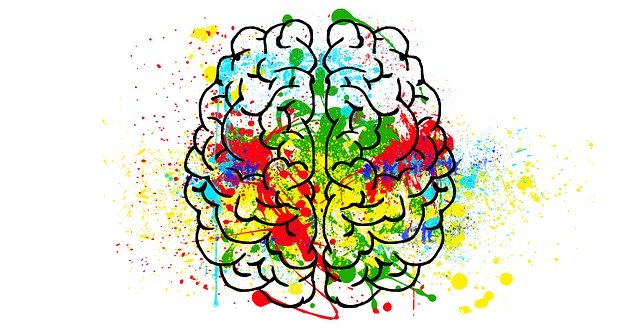Judith Grisel, Ph.D. is a renowned behavioral neuroscientist, a Bucknell University Professor of Psychology & Neuroscience, the author of the bestselling “Never Enough: The Neuroscience and Experience of Addiction,” and a former cocaine addict, among other mind-altering substances she abused regularly, and with virtually complete abandon, in her teens and early ‘20s. Following her own torturous battle with drugs, which was only resolved when she underwent addiction treatment, and her subsequent yearning to lead both a totally different way of life – firstly, one of abstinence, and secondly, to personally set out to seek a far better understanding of her disorder, Grisel headed back to college. A few years earlier, she had very gladly dropped out of the education system, because it radically interfered with her desire to consume whatever drugs she could get her hands on. She struggled but persevered with both.

Eventually, she graduated from college after several years, but her education didn’t end there. In fact, as part of Grisel’s desire to understand her disorder, there was also a neuroscientific goal – to find out what exactly causes addiction, and, if possible, what needs to be done to stop it before it even starts. Her education and studies into neuroscience is a short, but highly impressive list of academic achievement – remarkable for someone who, in her formative years, was lost in a world of reckless drug use, dangerous drug deals, and thoughts of her own suicide:
- Postdoctoral Fellowship Oregon Health & Science University
- Ph.D. University of Colorado (Behavioral Neuroscience/Psychology)
- M.A. University of Colorado (Behavioral Neuroscience/Psychology)
- B.A. Florida Atlantic University (Psychology)
“I was scraping by on nothing but lies and evasion, and my only priority was staying loaded.”
Her brief biography on the Bucknell University faculty page is a true testament to that desire of understanding all she could about addiction, and, perhaps, to seek her personal Eldorado of a cure for the disease:
“Grisel is a behavioral neuroscientist with expertise in pharmacology and genetics whose research focuses on determining root causes of drug addiction. She studies sex differences in the role of stress and endorphins on drug reward, and works to identify innate factors that contribute to individual differences in the liability toward addiction.”
If you think her book has all the answers, and Grisel has magically summoned up that elusive cure to addiction, you’ll be disappointed. However, “Never Enough: The Neuroscience and Experience of Addiction” is more than a laboratory journal for a specialized field of the scientific community. It’s a guide for anyone who has been affected by the disease of addiction, those who have directly suffered from alcoholism or drug addiction, and everyone who works in the field of addiction treatment, rehabilitation and recovery. And everyone else in between.
“Luxuries become habits, habits become compulsions, and compulsions become addictions.”
Grisel’s book is partly her personal history of addiction, more predominantly, a guide to the world of addiction as seen in neuroscientific terms, and lastly, the subtle balance she strikes in blending the two, by analyzing her drug-induced, irrational behavior through the eyes of a behavioral neuroscientist. In fact, so successfully and respectfully has her book been received globally by the wider scientific community and others, Grisel was recently invited to (and then attended) the 2020 World Economic Forum in Davos, Switzerland.
“Never Enough”: Grisel’s Own Addiction Story
The opening lines of the book say it all… Grisel’s drug-fuelled young life was one fraught with danger, all in the name of getting her next hit: “I was twenty-two. I’d been on the good end of a bad drug deal. In the wee hours of some morning, late in 1985, behind a nameless restaurant in South Florida, a dealer gave me and a friend the wrong bag.” What transpires after the “bad drug deal,” and created the seed of her desire to learn more that planted itself into Grisel’s, albeit, drug-addled mind, was something her friend said, as they finished up the last of the coke: “Toward the end of that binge, the stash mercifully depleted, both of us exhausted and on edge, my friend inexplicably announced that there would never be enough cocaine for us.” For Grisel, the real truth began to dawn: “As with every addict, my days of actually getting “high” were long past. My using was compulsive, and aimed more at escaping reality than at getting off. I’d banged my head against the wall long enough to realize that nothing new was going to happen – except perhaps through the ultimate escape, death, which, frankly, didn’t seem like that big a deal.” It was this self-realization that formed the basis of her motivation to return to college, to hit the books, to gain the degree-standard of study that would provide the foundation of her career-learnt knowledge of neuroscience. In her book, she sums up her attitude quite succinctly:
“I believed that the few pounds of fatty goop inside my skull were ultimately responsible for the totality of my condition.”

And what of her childhood? Were there answers to be found there? One of three children, Grisel enjoyed a privileged upbringing in New Jersey suburbia; her father was an airline pilot, her mother a nurse. She describes growing up in a “perfect-looking family,” and then slowly realizing her family was far from perfect: “What I learned to do in that moment was to doubt my reality; to realize that what was critical in life was the story, the veneer. And that felt like dying.” However, as her continued research would go on to clearly show, there was no one mitigating factor that stood out as a precursor to her later drug abuse. Grisel and her fellow neuroscientists believe a blend of nurture and nature can determine a predilection to addiction later in life – research shows that many genetic, epigenetic (defined as “relating to or arising from non-genetic influences on gene expression”), and environmental factors work together in complex ways that often remain elusive. Grisel experienced the euphoria of substance use at only 13 years of age when she got drunk for the first time. It was also the first time she ever felt truly relaxed as a child. At just 13, it was pivotal, even critical, because she was reaching a key developmental point when the teenage brain is primed for risky behavior. You don’t have to be a neuroscientist to know that getting drunk for the first time for a 13-year-old girl fits perfectly into the “risky behavior” category. Further risky behavior and recklessness to the point of criminality (and possible death) just to get the next hit or fix, would become just as much a part of her early life as the drugs themselves. Even now, with the cold-light-of-day rationale and reasoning of an eminent neuroscientist, the honest desire to once again experience that sense of calm and relaxation, as she first did at 13, has never left her, describing herself like this:
“Even today, below the persona of nurturing friend, committed partner, determined scientist, and adoring parent is a heartbreaking desire to embrace oblivion.”
“Never Enough”: Grisel’s Neuroscientific Conclusions
The chapters of her book that deal with those years of substance use and addiction are there, in part, to provide a backdrop of Grisel’s determined career as a neuroscientist. However, they serve another, more important role. These experiences and events of the young addict are used to highlight the main elements of Grisel’s neuroscientific reasoning and understanding – her actual conclusions to what she has learned in her last 20 years as a researcher studying neuroscience, and, in particular, addiction. Grisel believes that there are general principles of brain function that govern all compulsive use, and the book describes a number of these principles to provide a better understanding of “the biological dead-end that perpetuates substance use and abuse: namely, that there will never be enough drug because the brain’s capacity to learn and adapt is basically infinite.”
“Perhaps this understanding may even help the afflicted ones themselves because it’s quite clear to me that the solution isn’t coming in a pill.”

The “A & B” Process: How the Brain Adapts to Substance Use
Grisel’s addiction story illustrates perfectly one of the primary principles of brain function – however we try to affect the brain with drugs, the brain, in direct response, will adapt to counter this, and she terms this two-part action/ reaction the “A & B” process. As she describes in her book, there are 3 psychopharmacological rules that apply to substance use: “The very definition of an addictive drug is one that stimulates the mesolimbic pathway*, but there are three general axioms in psychopharmacology that also apply to all drugs:
- All drugs act by changing the rate of what is already going on.
- All drugs have side effects.
- The brain adapts to all drugs that affect it by counteracting the drug’s effects.”
* The “mesolimbic pathway” (also known as the “reward pathway”) is one of the major pathways the brain uses to deliver dopamine. The “A & B” Process applies predominantly to this third rule. More specifically, when a person uses a mind-altering substance, this is the “A” process, where the person experiences pleasure directly from the substance, whether it’s the sedation of alcohol or the kick of coke. In response to this, the “B” process follows, where the brain reacts by producing the exact opposite effect. This is the brain’s attempt to return itself to its normal state. As Grisel describes, it’s the reason why hangovers and coming down from a drug are unpleasant experiences. Because of the “B” process, and because our brains are exceptionally adroit at returning ourselves to our normal state, a person will inevitably need more and more of the drug to feel the benefit of the “A” process.
“What was once a normal state punctuated by periods of high inexorably transforms to a state of desperation that is only temporarily subdued.”
In other words, our brains are creating a tolerance to the substance. Not only that, but when the brain recognizes the substance from its memory banks, the “B” process begins almost instantaneously. This is the very reason that alcoholics and drug addicts require their substance of choice to just feel normal. Quite simply, without it, they would only feel the effects of the negative “B” process.
Judith Grisel, Ph.D.: “Never Enough: The Neuroscience and Experience of Addiction” (02/25/19), produced for Family Action Network
“Never Enough”: Substances & The Brain
Grisel’s studies have also led her to further conclusions about how substances affect the brain during the “A” process, and why it’s important as to when the brain is first exposed to the initial addictive substances. Here’s more of her conclusions that are shared in the book:
1. Identifying a Predisposition to Addiction
Grisel investigated the factors that lie behind a person’s predisposition to addiction – some of which are, obviously, already known and established. This is what she concluded:
- She identified 4 distinct factors that she believes lead to such a predisposition; these are:
- genetic susceptibility
- binge consumption
- the unfinished development of the brain during adolescence, and
- “a catalyzing environment” – including obvious influences such as childhood abuse or a lack of positive role models
- Furthermore, it is not necessary for a person to have all 4 factors in their background. However, once some, as yet unknown, a threshold is reached, she writes that “it’s like breaching a dam – virtually impossible to rebuild.”
2. How Drug & Alcohol Abuse Impacts upon the Adolescent’s Brain
During a child’s upbringing, their brains are busy developing – creating permanent structures for daily function. If your brain develops under the influence of substances, it will not grow and develop like a normal child’s brain. With an obvious reference to her own age (13 years old) when first experimenting with substances, she cites these other factors that are more commonly prevalent in adolescents:
- An “extreme” or gregarious personality
- Love of risk-taking
- Lower levels of endorphins
- Potential hypersensitivity to the neurological rewards of drugs
- Parents’ strict responses to a child’s outgoing behavior

3. Binge-Drinking: The Real Danger
As Grisel warns, alcohol is highly dangerous at an age where the brain is still developing. In fact, she estimates that the human brain does not fully mature until the age of 25. Furthermore, alcohol acts on many parts of the brain – endorphins, dopamine, glutamate and GABA (the two primary excitatory and inhibitory neurotransmitters), and many ion channels (electrically-charged ions that carry information to brain cells). In other words, it can cause havoc. Underage binge-drinking (when alcohol is being consumed before the brain matures, like an adolescent’s teens, and in very large quantities) will seriously affect the dopamine pathway, and it creates the worst possible pattern of drinking for future disposition to alcoholism.
4. Opiate Addiction & The Use of Methadone
With the news announced this week that the life expectancy rate in the U.S. has risen for the first time in years – proof indeed that the fight against the opioid epidemic is finally, if slowly, being won, opiates obviously feature heavily in Grisel’s book. She writes that opiates make the user feel like they are not suffering at all – that they are totally healthy and content. This is the reason that they are so attractive as drugs for abuse because most people don’t feel that things are perfectly fine the way they are. In this respect, opiates become the “perfect antidote to suffering of any kind.” The issue of addiction arises because, as suffering is reduced, a sense of euphoria increases. Remember the “A & B” process? Our brains respond to this euphoria by adapting – it works to lessen the euphoria. The result is the euphoria quickly becomes lost, leaving the user feeling miserable. Take away the opiates entirely, and the user feels “full of suffering – much more suffering than… [the user had] to begin with. So the brain produces its own type of suffering.” With regard to the use of methadone, it is simply a substitute addiction – “It’s cheap, it lasts a long time, and it makes the user not withdraw.” However, it in no way solves the problem or treats the addiction. What is worse is that “for those users – especially if they’re young – it’s even harder to get off of methadone than it is to get off of, say, heroin, because it lasts [for] such a long time.”
“Ultimately, you can’t avoid yourself. It didn’t matter how high I got, I was stuck with myself. I think we’re soon going to get to that point as a society, and then we might finally have our moment of truth.”

